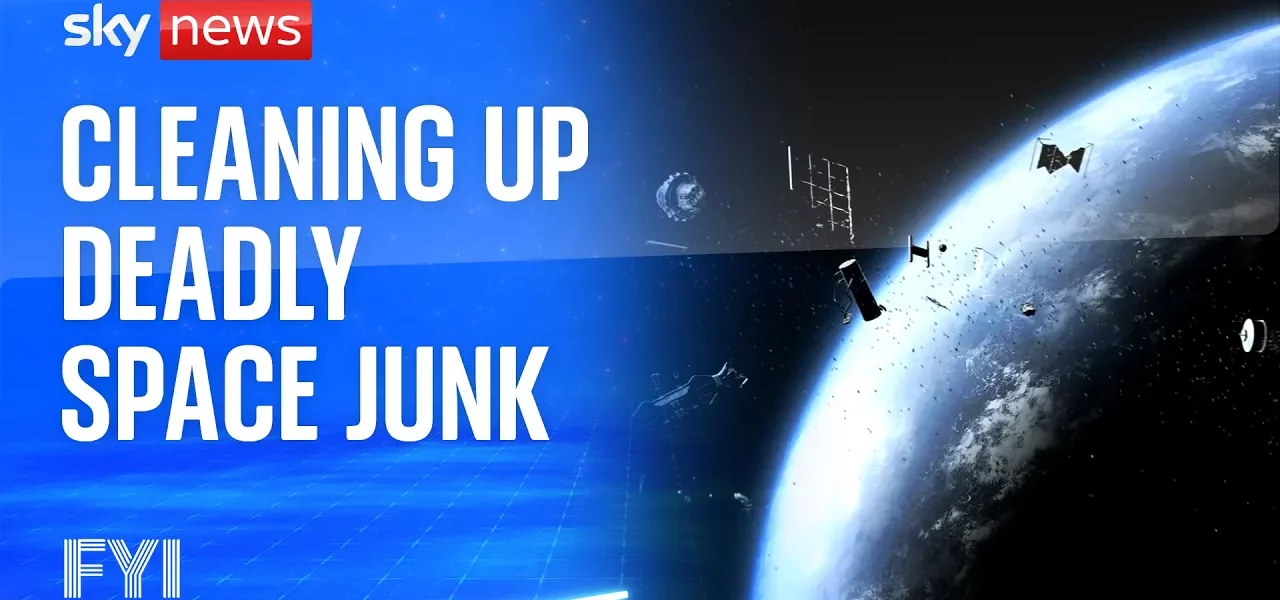Innovative Solutions to Space Debris: Astroscale’s Satellite Mission

As humanity continues to explore the cosmos, we are facing an escalating problem with space debris. In this article, we delve into the pressing issue of orbital waste, the implications it has for our satellites and astronauts, and the pioneering work being done by Astroscale to create a cleaner space environment.
Introduction to Space Debris
Since the dawn of the space age in the 1950s, thousands of rockets and satellites have been launched into orbit. While these technological advancements have brought many benefits, they have also resulted in a significant amount of space debris. Currently, over 16,800 satellites orbit the Earth, many of which are now defunct, contributing to a growing problem of space waste. With more than 35,000 pieces of debris from broken spacecraft hurtling through space at speeds of up to 172,000 miles per hour, the threat to operational satellites and astronauts is real and urgent. This article explores the current state of space debris and the innovative solutions proposed by companies like Astroscale.
The Urgency of the Space Debris Problem
The accumulation of space debris presents a serious risk to both satellites and human missions in space. The following points highlight the critical nature of this issue:
- Increased Satellite Launches: In recent years, the number of satellites launched into orbit has skyrocketed. Last year alone, 3,000 satellites were deployed, with projections of an additional 60,000 by the end of the decade.
- Collision Risks: The presence of space debris increases the likelihood of collisions, which can create more debris, leading to a cascade of potential collisions—a phenomenon known as the Kessler Syndrome.
- Impact on Everyday Life: Many satellites are essential for communication, navigation, and weather forecasting, making space debris a concern for everyday technology.
Astroscale’s Groundbreaking Solution
What is Astroscale?
Astroscale is a pioneering company based in Harwell, Oxford, dedicated to developing innovative solutions for space debris removal. Their mission is to create a sustainable space environment by removing defunct satellites and debris from orbit.
The ELSA-d Mission
Astroscale is developing a satellite known as ELSA-d (End-of-Life Services by Astroscale – Demonstration). This satellite is designed to capture and deorbit defunct satellites safely. Here are some key features:
- Docking Mechanism: ELSA-d is equipped with a special docking plate that future satellites can be fitted with, allowing for easy attachment and retrieval.
- Robotic Arm: For older satellites without docking plates, ELSA-d will utilize a robotic arm to grapple and secure debris for removal.
- Safe Deorbiting: Once captured, the debris will be safely brought down to Earth’s atmosphere, where it will burn up upon re-entry.
The Importance of Action Now
The need for immediate action to address space debris cannot be overstated. As the number of operational satellites continues to grow, the risk of collisions increases exponentially. The Kessler Syndrome poses a dire threat, where one collision could trigger a chain reaction, rendering low Earth orbit unusable. Here’s why we must act now:
- Prevention of Kessler Syndrome: Taking proactive measures to remove debris now can prevent the catastrophic effects of Kessler Syndrome.
- Ensuring Safety for Astronauts: Reducing space debris is critical for the safety of astronauts aboard the International Space Station (ISS).
- Protecting Future Space Missions: A cleaner orbital environment is essential for the sustainability of future space exploration and satellite technology.
Conclusion
Space debris is a growing concern that threatens not only our current satellites but also future space exploration endeavors. Astroscale’s innovative approach to debris removal through the ELSA-d satellite offers a promising solution to this pressing issue. As we continue to launch more satellites, it is imperative that we act now to ensure the safety and sustainability of our orbital environment. For more information on space innovation and debris management, check our related articles on space technology and environmental sustainability.
“`




